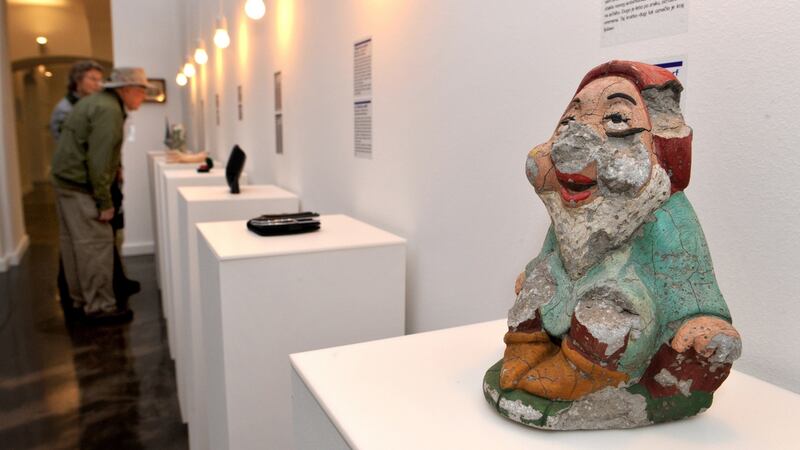In an accidental irony, one of the most romantic places in Croatia, a spot that lends itself to first kisses and whispered pledges, has also come to symbolise the end of many affairs.
The medieval heart of the capital Zagreb’s upper town, with its warren of cobblestone streets, tucked-away squares and stone stairs, offers a choice of quiet locations in which couples can gaze out over the city and admire the views. It is also the perfect backdrop for proffering that special love token, whether a soft toy or diamond ring.
While they busy themselves falling in love and exchanging mementoes, however, others for whom the gazing and admiring have worn thin bring the leavings of their failed romances to the nearby Baroque Kulmer Palace.

There they are met by ex-lovers Olinka Vistica and Drazen Grubisic, who since 2010 have been collecting the remains of couples’ break-ups and exhibiting them in their Museum of Broken Relationships.
The result, a collection of tat from around the world presented alongside notes explaining the significance of each item, is at turns hilarious, moving and cringe-inducing.
Toast to the end
Now we know what becomes of the broken-hearted’s love letters, toilet-roll holders and garden gnomes.
There is, for example, the “Toaster of Vindication”, stolen by an aggrieved lover in Denver, Colorado, at the end of a four-year relationship. “When I moved out, and across the country, I took the toaster,” the note reads. “That’ll show you. How are you going to toast anything now?”
Then there is “Honey Bunny”: a photograph of a toy rabbit packed in the bags of a globe-hopping couple from Zagreb. “The bunny was supposed to travel the world but never got farther than Iran,” the partner left holding the rabbit explains. “This is not Photoshopping but a real photo of the bunny in a desert near Teheran.”
A mobile phone was donated by a jilted lover after an affair lasting less than a year: “It was 300 days too long. He gave me his cell phone so I couldn’t call him any more.”
“Our societies oblige us with our marriages, funerals and even graduation farewells, but deny us any formal recognition of the demise of a relationship, despite its strong emotional effect,” Vistica and Grubisic write in their introduction to the museum. “Whatever the motivation for donating personal baggage – be it sheer exhibitionism, therapeutic relief or simply curiosity – people embraced the idea of exhibiting their love legacy as a sort of ritual, a solemn ceremony.”
The pair came up with the idea in 2006 when trying to answer a simple question: “What to do with all those tokens of love, material and immaterial, that you collected during your relationship?”
They realised that, like every challenge, a break-up can present an opportunity.
The result was a temporary exhibit in Zagreb that included items collected from friends such as 100 discarded roses, airsickness bags, and a “tingly” head-massager.
The exhibition has been on the road since, visiting cities in more than 20 countries, including Kilkenny in 2010, with the two collecting keepsakes along the way. In 2010 they found a permanent home for their exhibit at the Kulmer Palace, and the following year the museum won the European Museum Forum’s Kenneth Hudson Award.
Creative grieving
When she heard about the museum, a 70-year-old woman wrote from Yerevan, Armenia: “This is a postcard that was inserted through the slit of my door a long time ago by our neighbours’ son. He had been in love with me for three years. Following the old Armenian tradition, his parents came to our home to ask for my hand. My parents refused, saying their son did not deserve me. They left angry and very disappointed. The same evening their son drove his car off a cliff.”
The concept has extended to broken relationships between parents and children, and there is a desperately sad suicide note from a mother in Amsterdam: “Dearest H: To write a letter under these circumstances is almost impossible. I wish you and M. and M. all the prosperity possible. And lots of love and happiness – your mamma.”
Items that featured in break-ups as opposed to the happy days include a positive heroin test donated by a woman in Rijeka, Croatia, who surreptitiously used it on her addict lover to see if his denials of having relapsed were lies.
Vistica and Grubisic see the project as offering a chance to overcome emotional collapse through creation: by contributing to the collection.
“Ex-Axe”, a hatchet used to smash the furniture of a lover who walked out days after declaring undying love, illustrates the potential catharsis.










